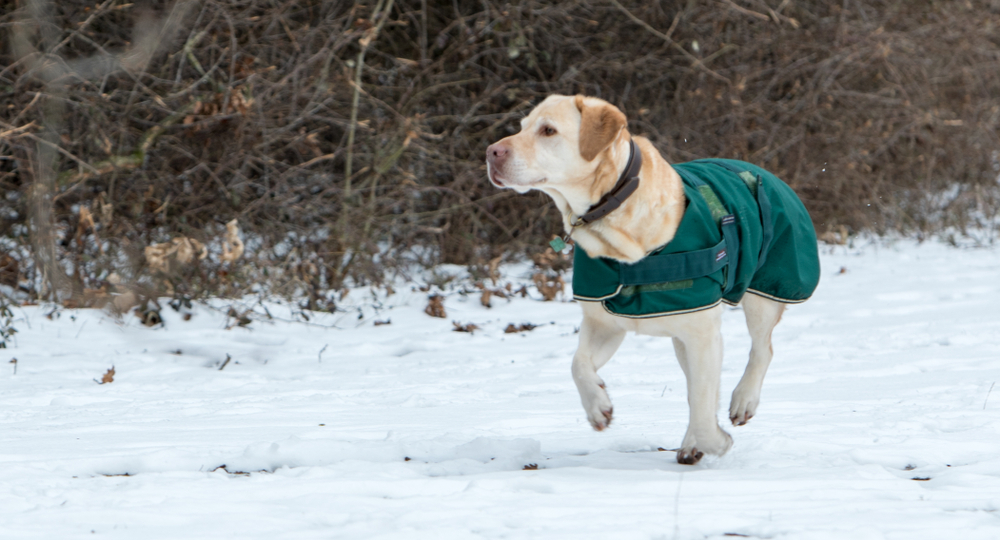New York winters can be brutal, and preparing for cold weather and ensuring your pet is protected from potential hazards is vital. Our Marcy Veterinary Clinic team wants your pet to be toasty warm and safe when the weather turns dangerous, so we explain potential threats your pet may encounter this winter and ways to safeguard your four-legged friend.
Hypothermia is a winter weather threat for your pet
Many people think their pet is cold-tolerant because of their fur coat, but pets are susceptible to winter weather threats such as hypothermia. Certain pets, including puppies, kittens, elderly pets, small pets, and short-haired pets are at increased risk, but no pet should be left outside for extended periods in below-freezing temperatures. Your pet’s normal body temperature is 101 to 102.5 degrees, and physiologic functions slow down when their temperature drops below 99 degrees. Signs include lethargy, delayed reflexes, slow, shallow breathing, dilated pupils, and collapse. Tips to protect your pet from hypothermia include:
- Never leave your pet unattended in a vehicle — Everyone is aware that a hot car is dangerous, but pets—especially small pets—left in a cold car can become hypothermic.
- Keep your outings short — When temperatures are below freezing, don’t allow your pet to stay outdoors for extended periods. Keep your cat indoors, and let your dog out only to relieve themselves.
- Know your pet’s cold tolerance — All pets have different cold tolerance levels, and you should know your pet’s limitations to protect them from hypothermia.
- Bundle up — If your pet is small or has a short hair coat, they may be more comfortable wearing a sweater or jacket. Ensure the garment fits them well and doesn’t impinge on their mobility or vision, or irritate their skin.
Frostbite is a winter weather threat for your pet
Frostbite is tissue damage caused by extreme cold that can affect pets when temperatures fall below 32 degrees. The body’s natural cold temperature response is to shunt blood away from the extremities and toward the vital organs, such as the heart, lungs, and kidneys, which inhibits blood flow to the extremities and decreases warmth and oxygenation. Areas such as ears, tail, toes, and nose are most commonly affected, and signs include pain, cold to the touch, discolored skin, and blistered or ulcerated skin. Following the tips that protect your pet from hypothermia can also protect against frostbite. Other tips include:
- Monitor your pet — On cold weather outings, monitor your pet’s extremities to ensure they aren’t exhibiting frostbite signs.
- Keep your pet dry — Pets who are damp or wet are more vulnerable to frostbite.

Deicers are a winter weather threat for your pet
Salt and other chemicals used to melt ice and snow can harm your pet’s feet, and can be toxic if your pet licks the substance from their coat and paws. Tips to protect your pet from deicing products include:
- Wipe your pet’s paws — Wipe your pet’s paws with a clean, dry towel after outings, ensuring you remove material from between their toes and paw pads. Also, remove all ice and salt caked in their coat.
- Protect your pet’s paws — Protect your pet’s paws with booties, ensuring that they fit well and don’t rub or cause blisters. If your pet won’t tolerate boots, use paw balm for protection and to treat dry, cracked paws.
- Use pet-friendly deicers — Some deicers don’t contain salt or chloride, making them safer for pets. Check the label to ensure you choose pet-friendly household products.
Frozen water is a winter weather threat for your pet
Frozen water poses several threats for pets. If they fall through the ice, they are at high risk for drowning, hypothermia, and frostbite, and if their water supply freezes, they risk dehydration. Tips to protect your pet from frozen water include:
- Keep your pet leashed — When on outings, keep your pet leashed, so they can’t run across frozen bodies of water.
- Check your pet’s water bowls — Ensure your pet always has access to fresh, clean water, and that their water outdoors doesn’t freeze.
Toxins are a winter weather threat for your pet
Products commonly used in the winter months, including antifreeze and rodenticides, can be harmful to pets. Antifreeze commonly contains ethylene glycol, and ingesting any amount can lead to severe kidney damage in pets. Rodenticides are commonly used to combat rodents who enter your home looking for warmth. Several rodenticide products on the market are extremely toxic to pets. Tips to protect your pet from winter toxins include:
- Clean spills — If you spill antifreeze, keep your pet out of the area and clean up quickly.
- Use pet safe antifreeze — Propylene glycol based antifreeze is non-toxic to pets, so read the label to ensure you purchase a pet-friendly product.
- Confine your pet — When you use rodenticides, ensure your pet can’t access the baited area, and remove dead rodents as soon as possible so your pet doesn’t attempt to eat them
These tips will help protect your pet from common winter weather threats, but if your pet gets too cold, contact our Marcy Veterinary Clinic team, so we can warm them appropriately and help prevent frostbite.








Leave A Comment